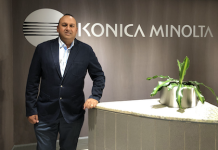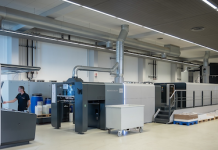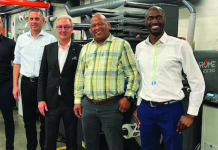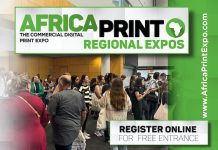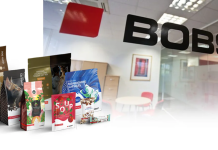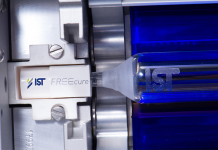Konica Minolta South Africa launched the bizhub PRESS C71cf digital label printer at an event hosted at its head office in Johannesburg on 2 March. The press is easy to operate, saves costs, optimises revenue opportunities and opens new doors for label printers, offering a diverse range of options.
‘The C71cf introduces you to new opportunities that were previously very difficult or couldn’t be done in a traditional way. There is a big cost saving aspect as there are less labour costs (particularly due to the fact that little operational training is required) and less wastage,’ said Leon Minnie, production print solutions manager at Konica Minolta South Africa.
Minnie also emphasised the machine’s unique maintenance agreement, ‘While other companies have big maintenance/warranty fees, labour rates and call out fees, this machine allows the client to pay a fixed fee, which covers every aspect: labour, travel, spares, consumables and warranties – its all inclusive. Beyond that there are no extra fees (except maybe for media, electricity and the client’s own operating cost); it’s all set, the client is looked after in any situation, whether five bottles of toner or ten are used the fee stays the same, unlike with other label makers.’
Minnie added that Konica Minolta South Africa is targeting those who use conventional machines, ‘We will promote the C71cf to all conventional label printers and advise clients of the additional revenue stream when purchasing digital labelling.’
The C71 is verified as environmentally friendly and food safe, with certifications stating that the label is safe for consumption and doesn’t harm the environment, with 100% biodegradable toner.
ESSAR Business Consultancy Digital Label & Packaging Solutions owner Syd Roberts, who has over 45 years of printing trade experience in gravure, offset and flexo, with some 20 years of those spent in digital label printing, realised the potential of digital label printing in the earlier phases of his career. He has gone to great lengths improving his knowledge and skills in digital label printing, eventually developing a business case, demonstrating that one could do a number of jobs faster and cheaper than conventional label printing.
‘We knew there was a market, but we had to prove it because nobody was going to invest otherwise,’ he said. ‘In those days digital printing was more expensive, a high risk investment for anybody, so I became involved in developing business models, which became more sophisticated in the latter years, and were used as part of the sales process. They gave clients a whole new range of options, when needed to prove a return in investment. Eventually the market opened up for us and sales went up.’
Roberts explained the trends in digital label printing. He said that digital printing is still in its infancy, sales are small but are expected to grow. While there is an even split between conventional and digital printing, it won’t be long before digital printing goes mainstream.
His research indicates that conventional printers feel the need to evolve. A company needs to acquire a product that gets the job done faster, thereby improving overall profitability.
‘With digital printing, knowledge, technological innovation and speed of production have increased. Conventional printing can take a matter of days to produce labels with lots of wastage. In contrast, digital printing ensures that labels are produced with ease, with more unique labelling,’ he said.
His research also shows that with digital printing, sales have increased exponentially over the years.
‘Ideally, the digital concept can be used to complement that of conventional printing, adding onto an existing business, maximising margins, increasing versatility and protecting overall profitability. Today digital printing opens doors for brands that hadn’t been opened before. Multiple variations can be printed allowing brands to choose what is best,’ continued Roberts.
Roberts’ research also states that the trend is toward shorter print run lengths: 25,000 labels represents 30% of job orders and is increasing, while 50,000 labels represent 65% but longer job runs are on the decline.
‘The C71cf caters for mid-range users, accommodating both short and long medium print runs. It’s easier to operate and provides a lower cost solution for short runs, opening new markets at a low capital cost. Instead of buying presses that produce lots of labels, Konica Minolta offers a solution for people who require a smaller volume of labels.
‘The C71cf is ideal not just because it is easy to use and cost effective, but because it offers a fixed charge per metre, not just for the toner but also for the service and parts. It’s good for label printers to have that assurance, which allows for easier job estimations.
‘It will encourage conventional label printers to convert to digital, and it will complement businesses with existing digital presses by adding another asset to the shop floor that will satisfy client needs. It can even be outsourced to other businesses,’ said Roberts.
Label producers are used to buying a machine that serves a particular client, this machine allows for different labels for different clients. Roberts mentioned that the machine is ideal for the wine making market; the label quantity for making wine labels fits right into the area where this machine is very powerful, ‘I see great opportunities for wine labels with this machine, it will allow wineries to produce labels in-house.’



